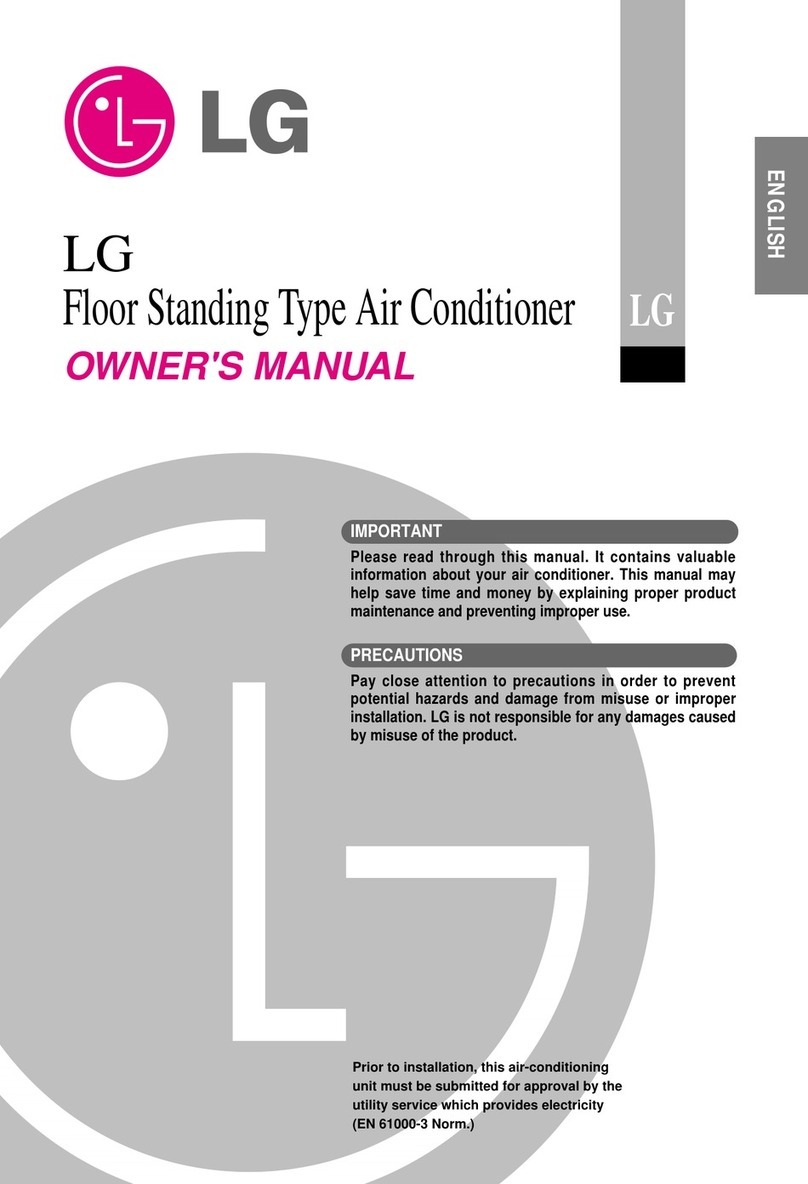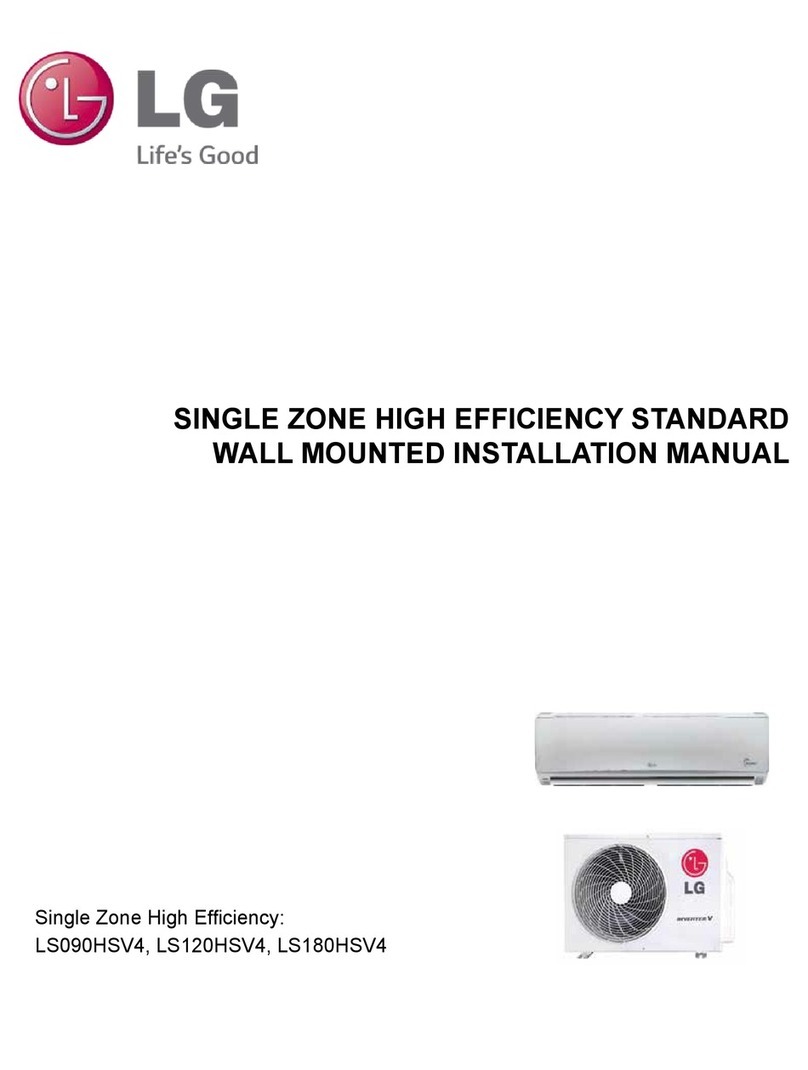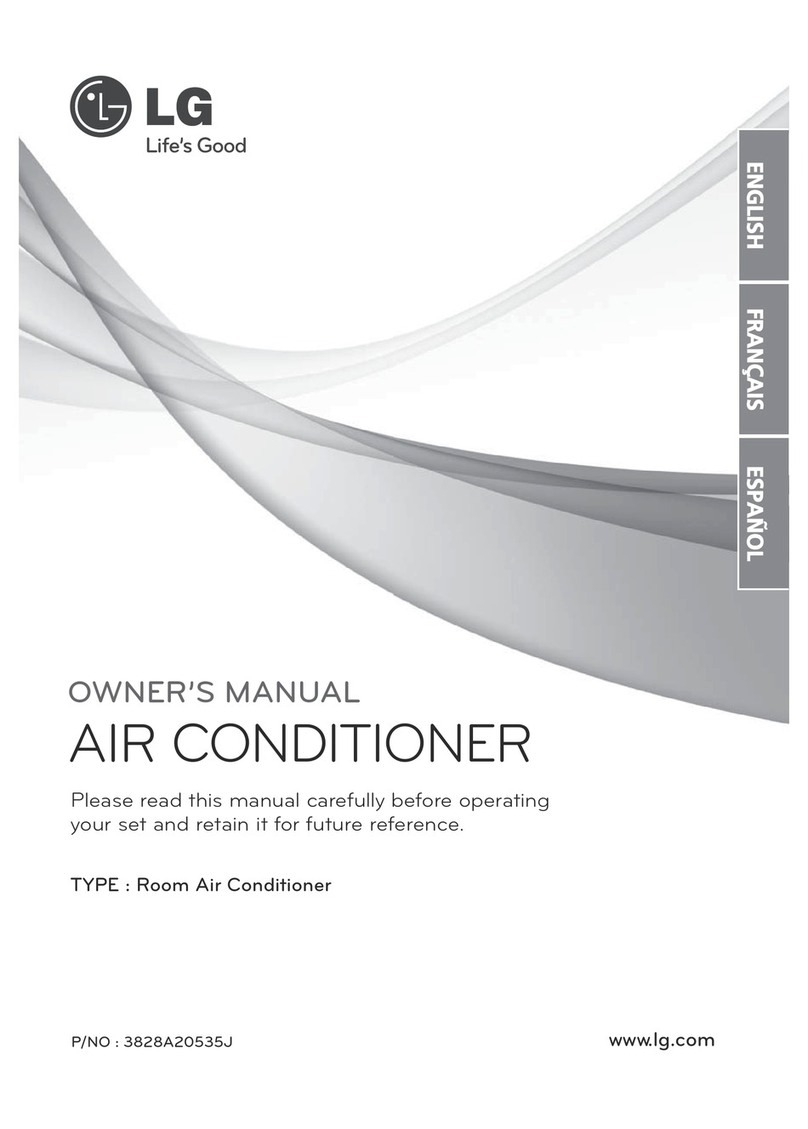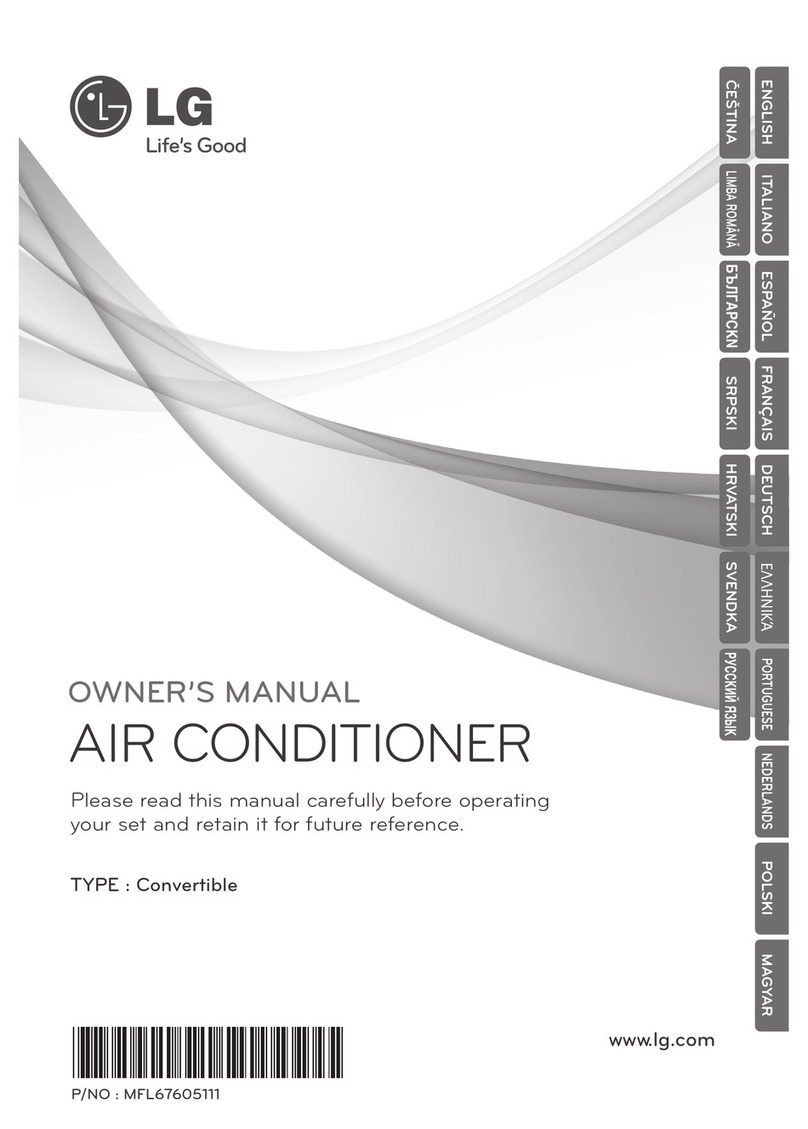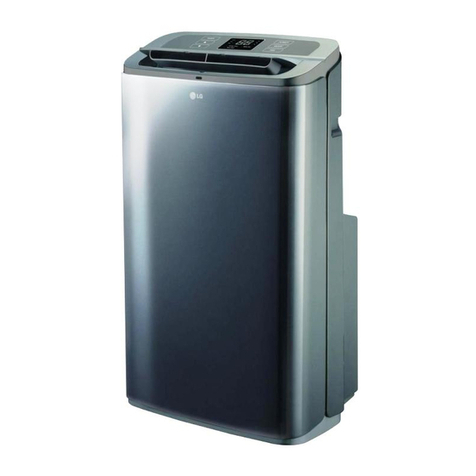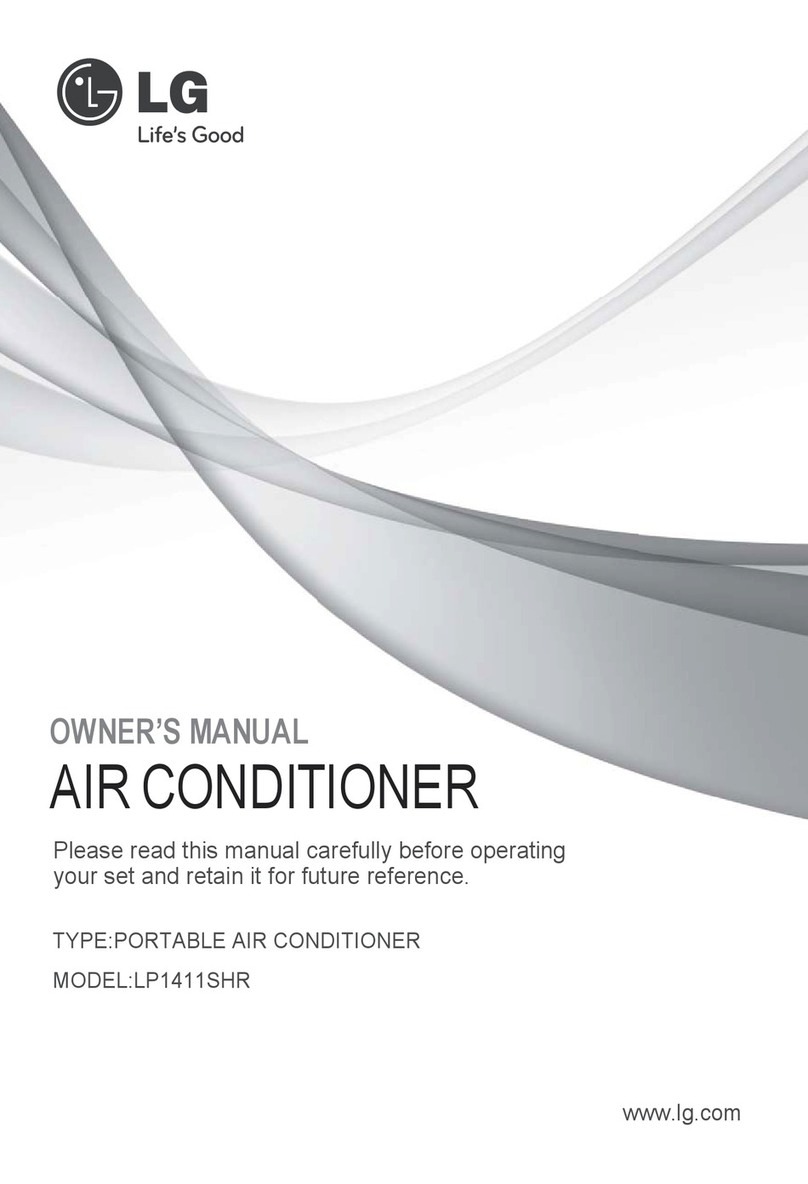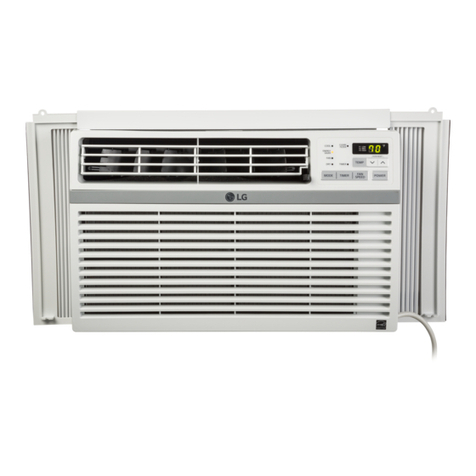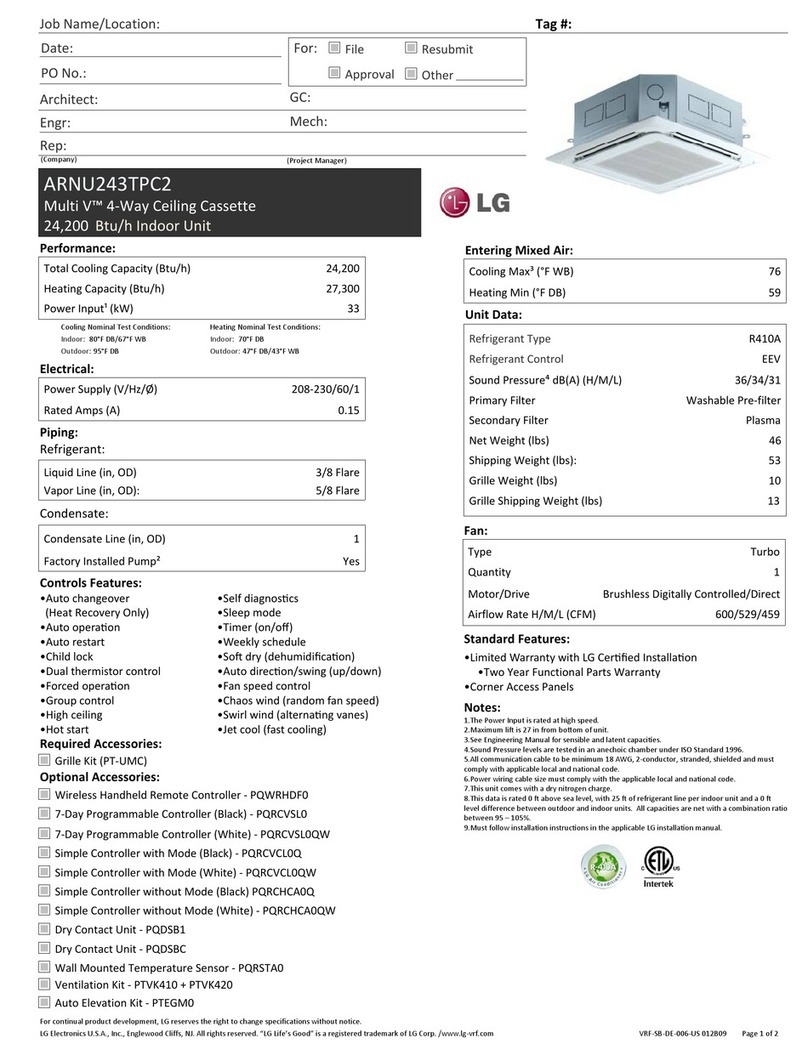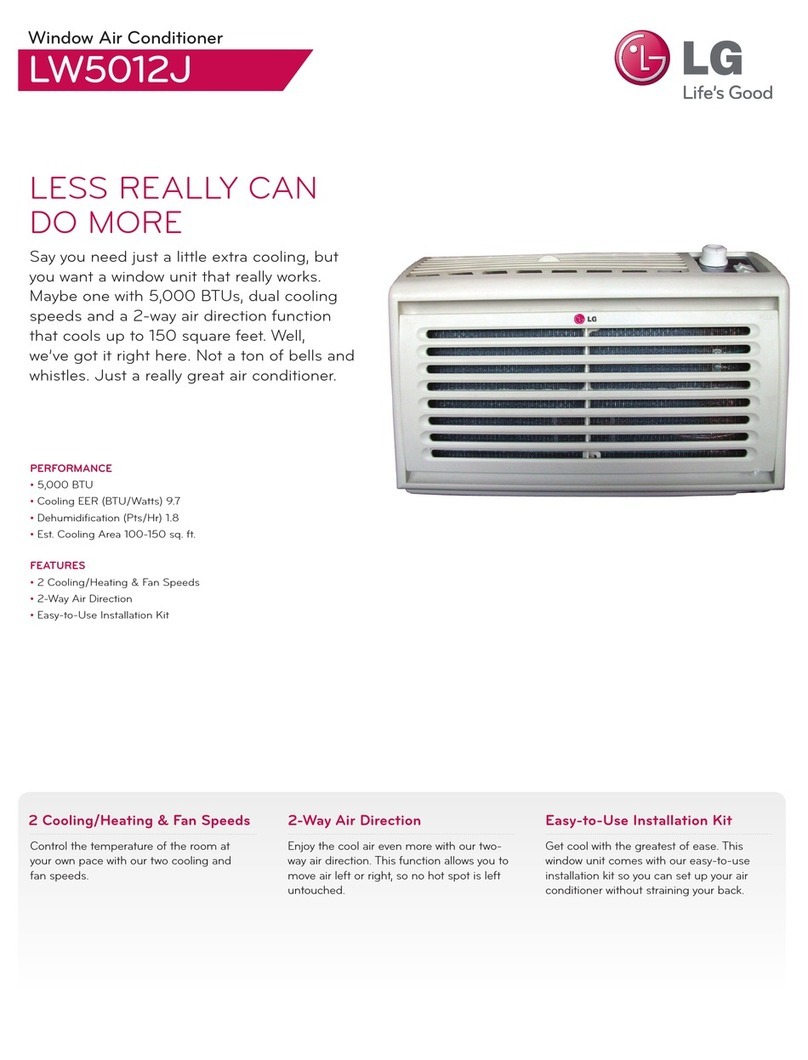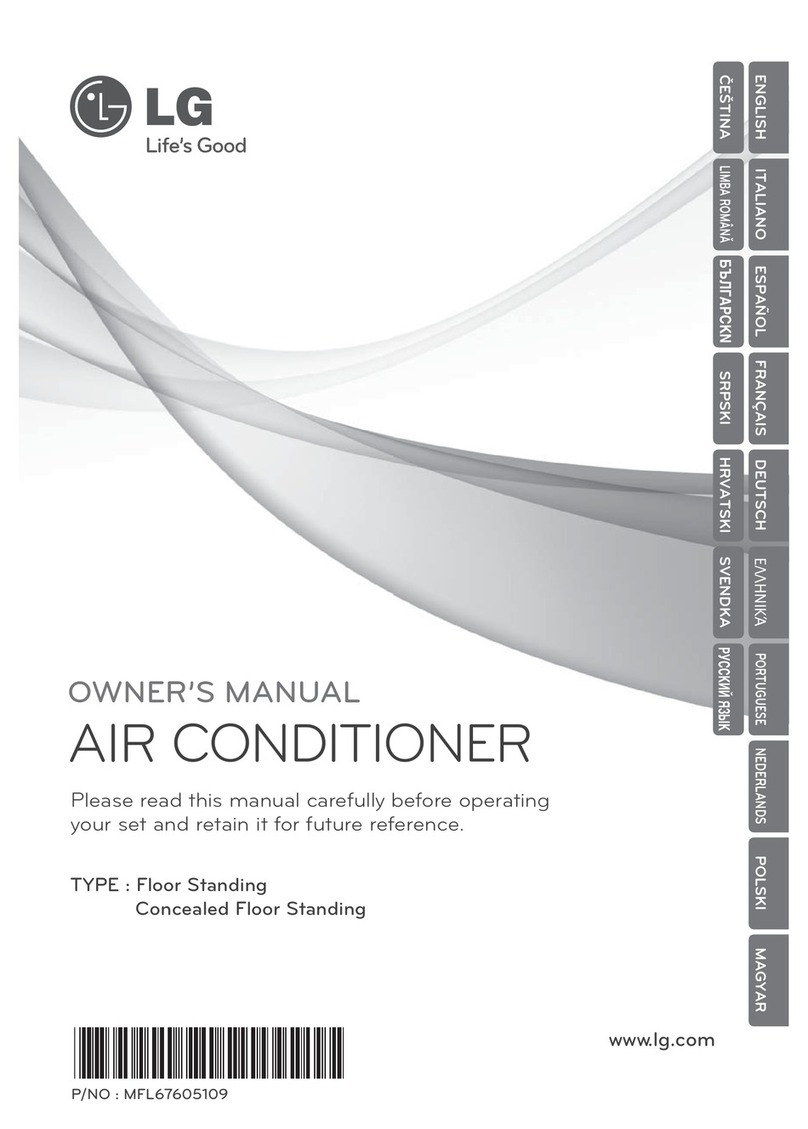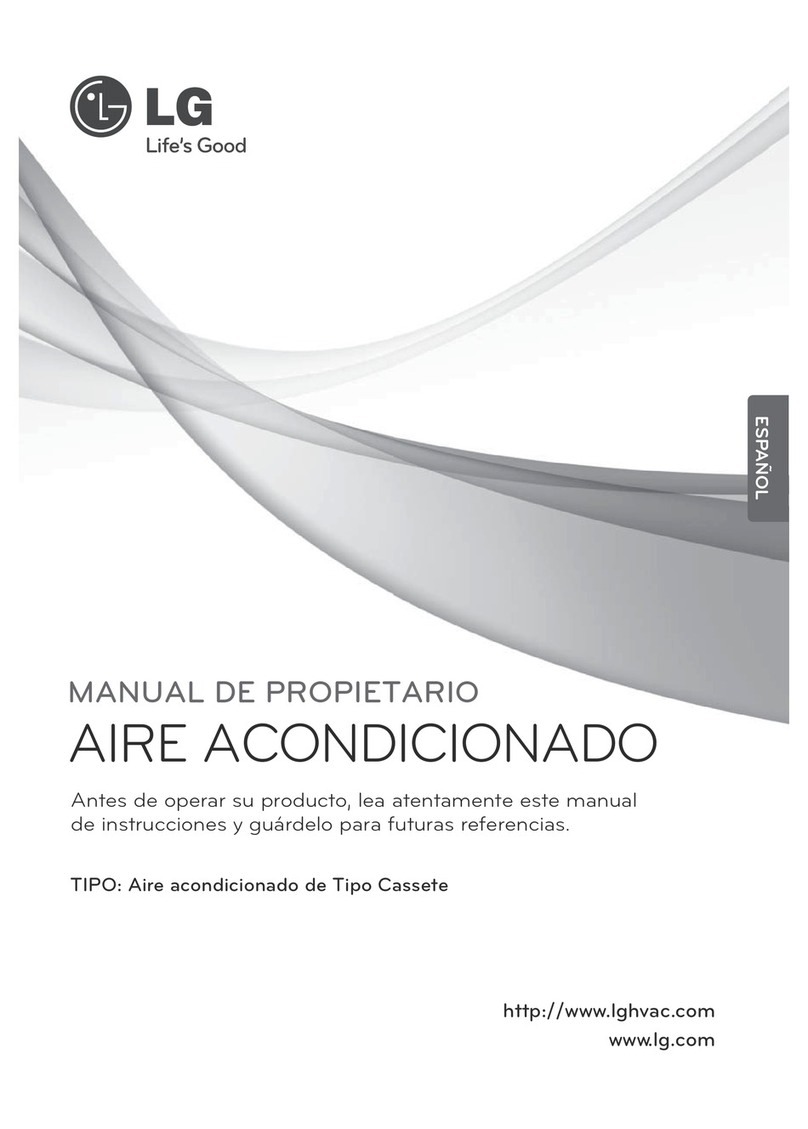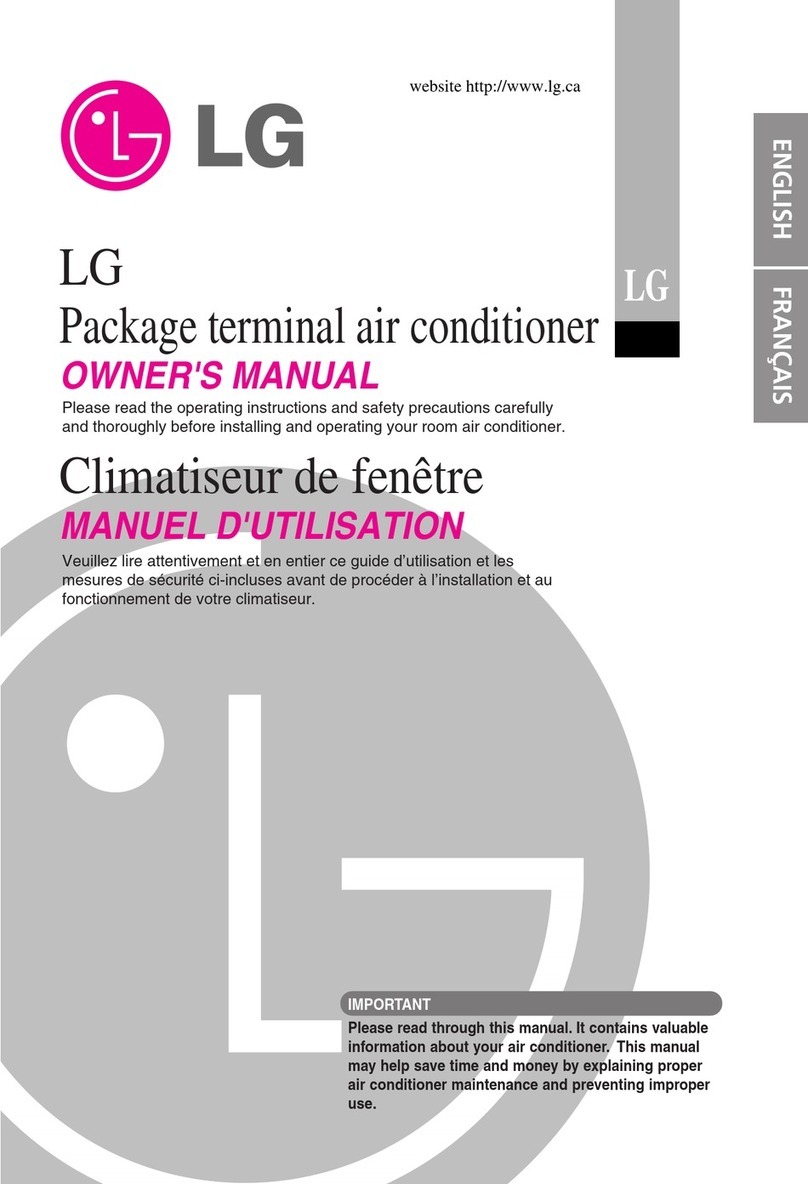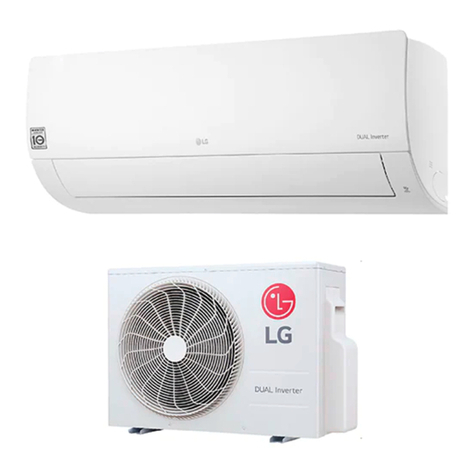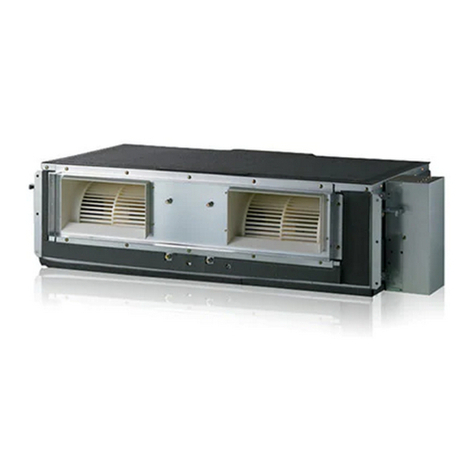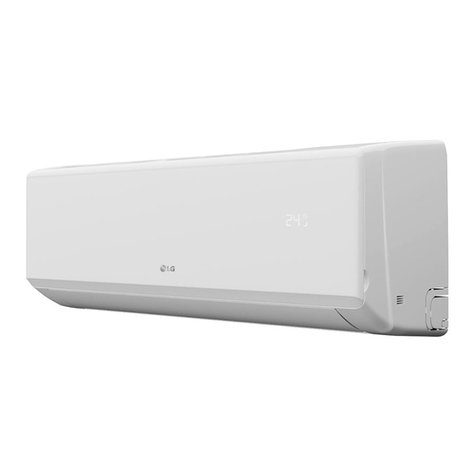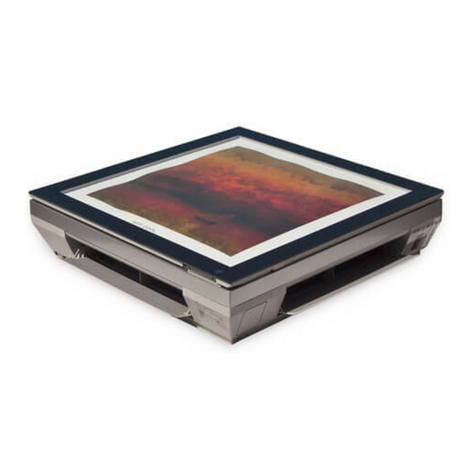
Installation Manual 3
Important Safety Instructions
Always comply with the following precautions to avoid dangerous situations and ensure peak
performance of your product
WARNING
It can result in serious injury or death when the directions are ignored
CAUTION
It can result in minor injury or product damage when the directions are ignored
WARNING
• Installation or repairs made by unqualied persons can result in hazards to you and others.
•
The product shall be installed according to the wiring regulations of the corresponding country.
• The information contained in the manual is intended for use by a qualied service technician
familiar with safety procedures and equipped with the proper tools and test instruments.
• Failure to carefully read and follow all instructions in this manual can result in equipment mal-
function, property damage, personal injury and/or death.
Installation
• Do not turn on the breaker or power under condition that front panel, cabinet, top cover, control box
cover are removed or opened.
- it may cause re, electric shock, explosion or death.
• Do not use a defective or underrated circuit breaker. Use this appliance on a dedicated circuit.
- There is risk of re or electric shock.
• For electrical work, contact the dealer, seller, a qualied electrician, or an Authorized Service Center.
- Do not disassemble or repair the product. There is risk of re or electric shock.
• Always ground the product.
- There is risk of re or electric shock.
• Install the panel and the cover of control box securely.
- There is risk of re or electric shock.
• Always install a dedicated circuit and breaker.
- Improper wiring or installation may cause re or electric shock
• Use the correctly rated breaker or fuse.
- There is risk of re or electric shock.
• Do not modify or extend the power cable.
- There is risk of re or electric shock.
• Be cautious when unpacking and installing the product.
- Sharp edges could cause injury. Be especially careful of the case edges and the ns on the con-
denser and evaporator.
• For installation, always contact the dealer or an Authorized Service Center.
- There is risk of re, electric shock, explosion, or injury.
• Do not install the product on a defective installation stand.
- It may cause injury, accident, or damage to the product.
• Be sure the installation area does not deteriorate with age.
- If the base collapses, the air conditioner could fall with it, causing property damage, product failure,
and personal injury.
!
!
!
Important Safety Instructions









